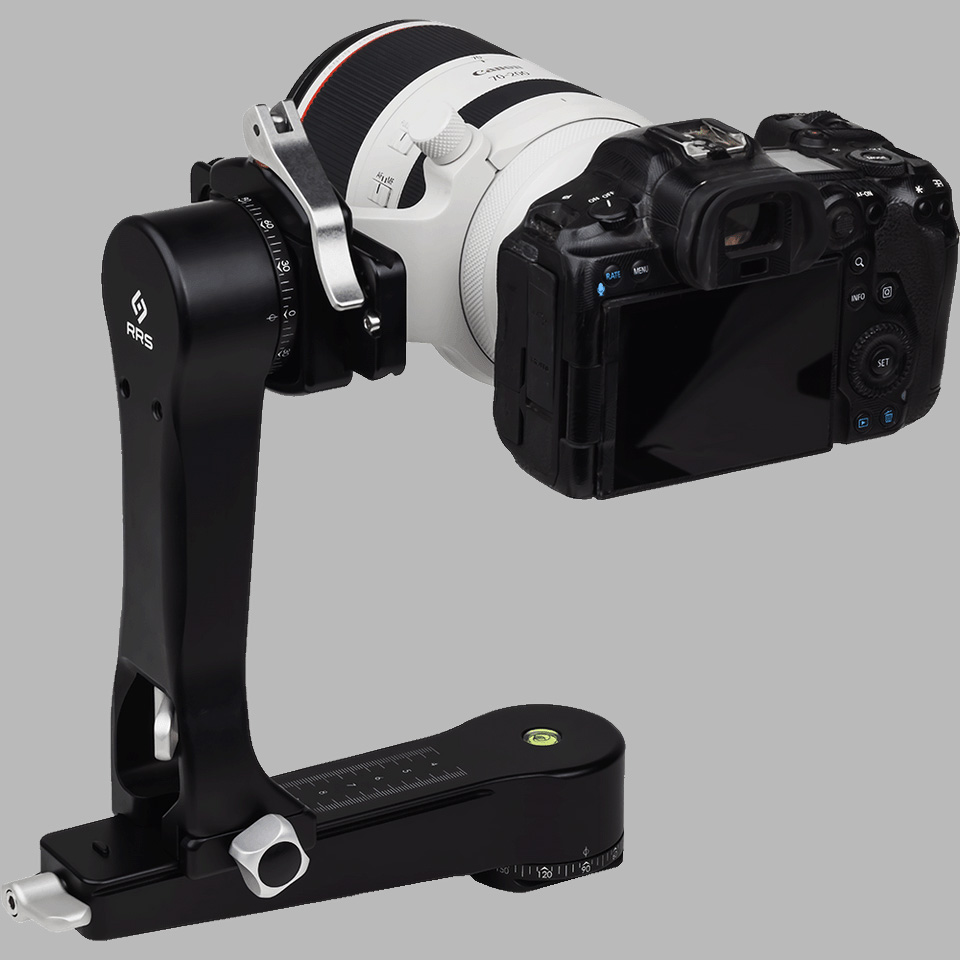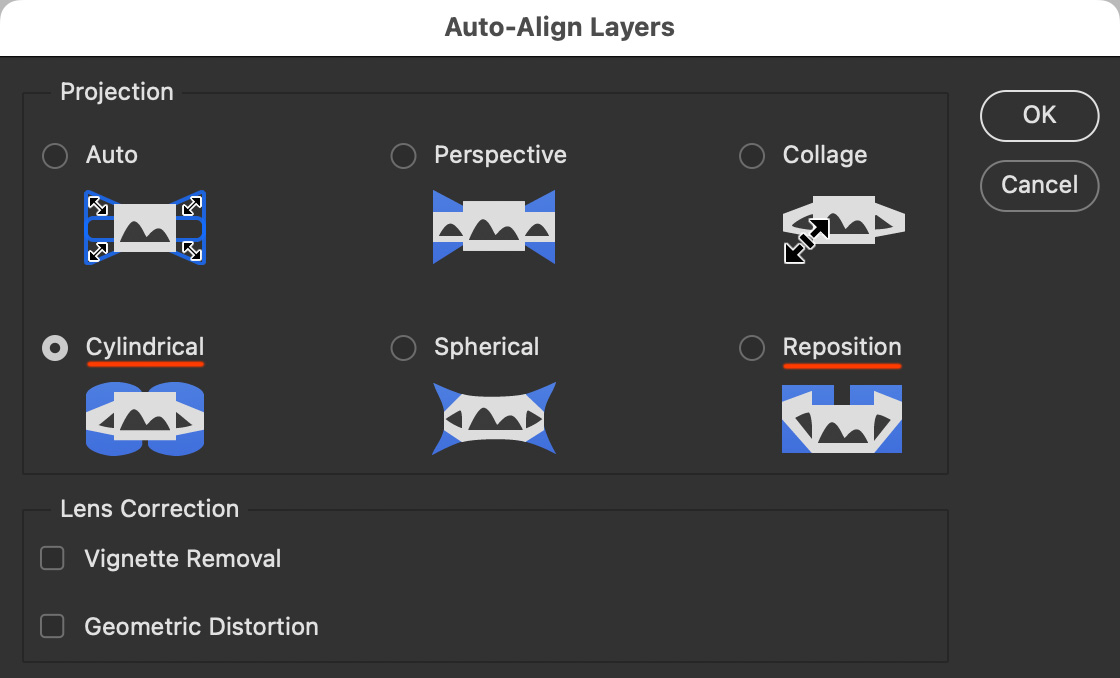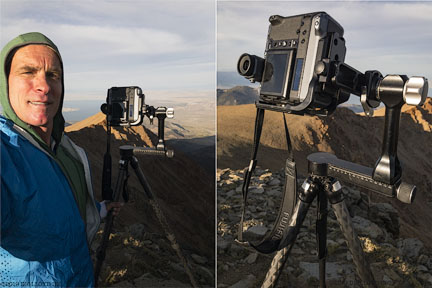Reader Comment: “abandon Photoshop for panoramas and use PTGUI instead”

UPDATE: see my initial findings about the merits of PTGUI.
Panoramas sometimes drive me crazy with problems at join points, for reasons I do not understand. It’s not a parallax thing; see Capturing Parallax-Free Panoramas using the Really Right Stuff PG-02. The Really Right Stuff PG-02 is a superb device, but it is just too cumbersome for me to carry in general now, and I never liked having to swap heads constantly for regular images vs panoramas.
UPDATE: Really Right Stuff now has a smaller version of the PG-02, the PG-02 MK2 Pano-Gimbal Head.
Gigapixel Stitched Images and Panoramas with the Really Right Stuff PG-02
In the field, I carry the Really Right Stuff TFC-24L with the AcraTech panoramic head sitting atop the Acratech Leveling base. That setup makes perfect panoramas so long as things are level. But often there is a need to point the camera up or down, taking the camera off-level, and that creates parallax when rotating the rig. Nevertheless, this is what I often do because I can only carry so much gear. I should dig through my pile of Really Right Stuff pano gear and make myself a solution.
Reader Pieter K writes:
You should abandon Photoshop for panoramas and use PTGUI instead. You will love the program. It is well done, fast, has many ways to make and correct pano's and rock solid. Never crashes - unlike Photoshop on my computer.
I often use cylindrical panoramas for very wide angle images. I love them. Because cylindrical panos do less stretch images ( people) the quality is better than rectangulr ones. Ideal for mountains.
I never use lens distortion correction for it means more stretching, or double stretching.
It all begins with finding the exact nodal point of the lens and keeping it in place during shooting.
DIGLLOYD: Pieter is very experienced with panoramas, and so it would be foolish to reject this advice about using PTGUI instead of Photoshop without trying it. However, I got the same advice ~2 years or so ago, tried PTGUI, and was quite disappointed. Did I do something wrong? Possibly, and that’s not fair to PTGUI, so I should give it a fresh look.

On a flat sensor/film (basically everything) the optical design to control distortion and field curvature means an increasingly large difference in magnification from center to corners. Try it yourself with a wide angle lens, placing the same thing in the center vs corner and watch the huge change in size. This is a fundamentally problematic behavior for panoramas, which is why longer focal lengths are preferred when feasible.
In Photoshop, a cylindrical projections causes a considerable loss of sharpness with normal lenses eg 55mm on the Fujifilm. The smearing and stretching cut the resolution to 1/2 to 1/3 of what I am getting with Auto Align = Reposition + Auto Blend. But that seems to be a Photoshop problem, since PTGui does much better.
UPDATE Dec 14 3 PM: I gave PTGui Pro a fresh look with the Saddlebag Lake after Snowstorm image I showed in a prior post, using a Cylindrical projection. The results are veryvery good and without any join-point problems, far superior to Photoshop Cylindrical, but less sharp than Photoshop’s Reposition + Auto Blend. However, that method has join issues that can be difficult to deal with.
Does cylindrical projection work better with wide angle lenses? Massive stretching is going on already, so that seems probable. In general, panoramas with wide angle lenses are inherently compromised by the huge changes in subject size that come with rotation.
In 35mm-format terms, 50mm or longer focal length is best for panoramas, with somewhere around 75mm being ideal (field of view vs number of frames), which equates to ~90mm on medium format. That said, the 55mm focal length on theGFX100S is one I like for just about everything, and it can quickly produce a very wide angle scene without excessive wide angle effort, owing to the 55mm focal length.
Below, use of a Cylindrical panorama assembly results in considerable loss of sharpness compared to Reposition. The Cylindrical tends to avoid join issues, but at this considerable cost. I might as well shoot twice as wide and crop, since this sharpness loss defeats a big part of the goal (higher resolution).

Below, the downside: a bad join point with Reposition. The trick is to deal with that bad join. I’ve found a few methods that can often eliminate the issue, but I am still exploring the best way to do it.


(Really Right Stuff PG-02 on the Really Right Stuff TFC-24L Tripod)
iPhone 7 Plus + iPhone 7 Plus 4.0 mm f/1.8 @ 28mm equiv (4mm)
ENV: Dana Plateau, altitude 12442 ft / 3792 m, 55°F / 12°C
[low-res image for bot]

































